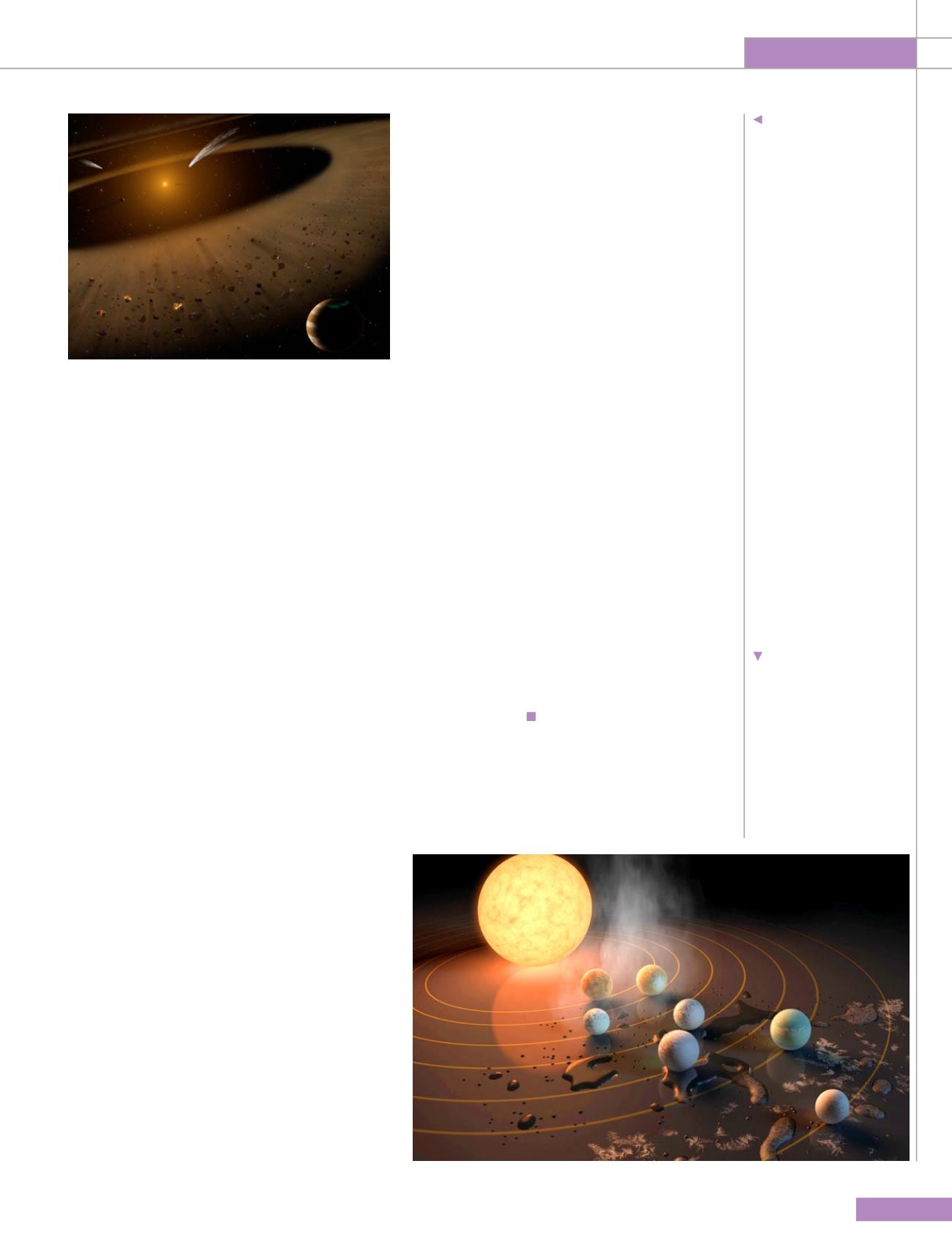
ROOM
79
Space Science
required four billion years of evolution before
arriving on-stage.
Yet another thumbs-up for red dwarfs is their
ubiquity. Three-quarters of all stars are red
dwarfs. That means that in a sample of the nearest
ones, they will typically be only half as distant as a
similar-sized sample of Sun-like stars. Any signals
will be stronger.
In addition to technical improvements for radio
SETI, there are renewed efforts to invigorate
what is termed optical SETI – a search for laser
flashes from the sky. A simple calculation shows
that a powerful laser, when paired with a relatively
straightforward optical system, could produce a
short flash easily detectable from 100 light-years
away using instrumentation that is simple to build.
Unfortunately, typical optical SETI systems rely
on photomultiplier detectors which, while very
sensitive, limit the searches to one star system
at a time. Consequently, the SETI Institute is
building a set of relatively low cost devices that
can simultaneously search the entire night sky in a
hunt for laser pulses.
While the sensitivity for this all-sky, all-the-
time, system is less than for photomultiplier
instruments, being able to look everywhere
would at least open our investigations to
intermittent ‘pings’. Such signals might be sent
by extraterrestrials wishing to learn if anything
of interest has developed on Earth. After all,
the aliens could know that our planet has a rich
oxygen atmosphere, and might be trying to elicit
a response from anyone knowledgeable enough to
build a radio transmitter or laser.
Cosmic company
No one can be certain whether SETI will ever
succeed. However, some practitioners are
optimistic that a discovery might occur in the
next two decades, spurred by the exponential
improvement in search speed.
If so, what would we learn? The receivers used
for radio SETI are designed to find signals, but
not any modulation or messages. The latter would
require far larger systems, although if a detection
was made, it is easy to imagine that money would
be made available to fund such equipment. We
would want to know what ‘they’ were saying.
But aside from possible messages, what would
be the reaction of the public to learning that there
is other intelligence in the universe? Although
many imagine that the news would be disruptive,
possibly to the extent of threatening civil order
and provoking a crisis for organised religion, there
is little reason to think this is true.
In 1996, there were claims that evidence of ancient
life, in the form of microfossils, had been found in a
meteorite known to have come fromMars. The story
was considered interesting, but in no way disturbing.
The public had been conditioned by endless science-
fiction stories to expect that the red planet may once
have hosted life. This was merely confirmation of a
widespread belief.
Similarly, the public has long been exposed
to the idea of intelligent aliens inhabiting other
star systems. To find that they exist would be to
confirm our expectations, and therefore might
not be terribly disruptive. Nonetheless, knowing
that we have company is a different matter than
speculating on its presence. The future course of
humanity might not be immediately and drastically
changed - but the long arc of history would
certainly be bent.
About the author
Dr Seth Shostak
is Senior Astronomer at the SETI Institute in
Mountain View, California. He is also the host of ‘Big Picture Science’,
the SETI Institute’s weekly radio show, and is committed to getting
the public, especially young people, excited about astrobiology and
science in general.
Seven Earth-sized
planets have been
observed by NASA’s
Spitzer Space Telescope
around a tiny ultra-cool
dwarf star called
TRAPPIST-1. Three of
these planets lie in the
habitable zone. This
artist’s concept appeared
on the cover of the journal
Nature
in February 2017.
NASA’s Stratospheric
Observatory for Infrared
Astronomy (SOFIA)
recently confirmed that
the Epsilon Eridani system
(10.5 light years away) has
an architecture
remarkably similar to that
of our Solar System,
although Epsilon Eridani is
much younger than our
Sun.
Lockheed Martin
NASA/SOFIA/Lynette Cook
NASA/JPL-Caltech


